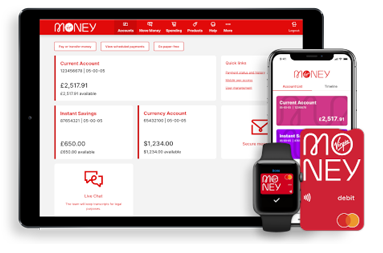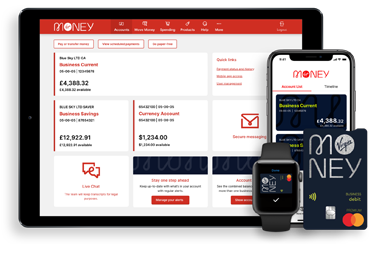-
Login
More Login links
Internet Banking
Business Internet Banking
Started an application?
Other services
Help
-
Register
More Register links
Internet Banking
Business Internet Banking
Other Services
- Our Products More business product links
Bank accounts
- Business current account
- Business choice account
- Switching business accounts
- Compare all business accounts
Savings accounts
Loans and Finance
- All Treasury solutions
Treasury solutions
Help and support
- Online Banking More online banking links
BusinessOnline
- Commercial More commercial business links
Business enquiries
Contact us about a general enquiry.
- Corporate and Structured Finance More corporate business links
Corporate and Structured Finance
SME Cashflow Finance
Unlock your cash flow potential. At Yorkshire Bank we take a flexible approach to business borrowing.
Lending is subject to status and eligibility.
- Our Sector Expertise More sector expertise links
How to create a long term growth strategy
< back to all business news articles
28/05/2018
Growing your business requires plenty of juggling as you build up the areas of production, operations, human resources, finance, marketing and sales – the key pillars of your business.

The trick is to make sure you have enough cash to simultaneously increase business capacity and sales. It can be done with some careful planning and thoughtful advice.
Growth requirements
If you're committed to growth then you need to understand the implications of capability, capacity, leadership, finance and sources of capital.
You also need to be focused and have enough resource to see your growth phase through to completion. Not every business can grow, and not every business owner can manage growth. You need to be prepared for success as often you only get one chance to break into a new market.
Capability
Capability depends on you and your staff’s ability. Do you personally have the capability to run a business that is 2, 3, or 10 times bigger than you are now? It’s not as easy as you might imagine, and you could find moving from working in the business to working on it a difficult transition. Take care not to be too top-heavy with management. To make this easier consider:
- Having key staff in place to manage a larger operation. You may have to recruit people with new skills or experience.
- Delegating parts of your role so you can manage the business. You may find yourself spending less time with existing customers.
- Conducting a skills analysis to identify any gaps.
As you scale up you’ll find that productivity is increasingly important. Small improvements in how you accept orders, process work and deliver to the final customer can lead to big changes in profit.
Capacity
Capacity is how much your business can scale to cope with growth. To make this easier, consider:
- Calculating how quickly you could scale if you need more people, more equipment, more room or more supplies.
- Having contingency plans in place if demand exceeds your ability to supply – this might include outsourcing to other businesses, contractors or sub-contracting.
- Making sure any growth you have is sustainable. If you scale up then you’ll want long term orders, guaranteed contracts or agreements in place that allow you to increase your capacity with confidence.
Create a workflow plan to identify any potential bottlenecks so you can plan to minimise them.
Finance and sources of capital
Never underestimate how much it could cost to get your growth plans underway. Make sure you’ve got enough reserves to implement your growth strategy successfully. The most common sources of capital for small businesses are:
- Your own business – cash reserves in the business that you have earmarked for growth.
- Your own cash – money you have personally or any equity you have such as in property you could unlock.
- Borrow the funds – from the bank or other lenders of finance.
- Friends and family – a common source of finance, but be careful when setting terms to prevent things turning sour with friends and family.
- Angel investors – high net worth individuals that have funds to spend and are interested in your sector.
- Venture capitalists – private companies that have a portfolio of businesses that they invest in if they see high growth potential.
- Corporate investors – often large businesses have funds to buy into smaller businesses if the industry sector is complementary, and they see potential for your business beyond the current customer/supplier relationship.
Leadership
To lead your business through a growth phase will take a new set of leadership skills, especially if your employee head count goes up and the dynamics of your business changes. For example, managing and leading 10 employees requires a different management style to 50 employees or 200 employees. You’ll need to start relying on other senior management as you move to a more strategic role.
When leading your business in a period of growth consider:
- Knowing what your leadership qualities are and identify the areas to work on.
- Finding a mentor with experience of larger businesses to share your business challenges with.
- Forming a board of advisors that you can seek advice and guidance from.
- Ultimately trusting your instinct and be decisive.
Good leadership is inclusive. You need the help of others to grow your business and will need to learn to delegate. Surround yourself with the right people for the job you need done, train them well and provide them with the tools they need to do the job well.
Growth outcomes
The fundamental objective of growth should be to improve profits through:
- Improving efficiences – a larger business should provide opportunities to review all your systems and look for ways they can be improved. The better the system, the more efficient and productive it will be.
- Increasing output – invest more time and money in manufacturing products that are selling well, and consider increasing the amount of time and money you spend promoting them.
- Improving margins – through being able to buy in bulk and use your buying power to negotiate better prices and conditions from suppliers. You should also be seeking to increase your prices over time.
Summary
Growth has its risks, but a well-designed strategy can deliver stability, security and long-term profits. Identify the key growth strategies that are realistic for your business. Will you have enough money to finance the development without impacting your core activities? Be careful to avoid expansion you can’t afford.
Work with a qualified accountant or financial advisor to prepare realistic financial projections for your business – and to explore all financing options available.
POSTED IN: Growth
SHARE
Related Articles
You are here: Business Banking > Business News > Articles
- About Yorkshire Bank
- About us
- Virgin Money UK PLC
- Media relations
- Careers

Internet Banking has moved
To log into Internet Banking you now need to use Virgin Money Internet Banking. You'll get the same great service and are able to access all your accounts.
Your log in details will stay the same and you can log in directly from the shiny new Virgin Money website.
Continue to Virgin Money Internet Banking
Go to the Virgin Money website
Be Alert
Never tell anyone a token 3 response code, even someone from the bank. You should only input these codes to our secure Business Internet Banking service when you’re sending and making payments. If anyone calls and asks for a token 3 response code or asks you to authorise a payment on the App for fraud checks, hang up and call us on 0800 085 2914 from another line if possible, remember the Bank will never ask you to disclose your security details.
Continue to Virgin Money Business Internet BankingYou can find impartial information and guidance on money matters on the “MoneyHelper” website.
Yorkshire Bank is covered by the Financial Services Compensation Scheme (FSCS), Find out more.
